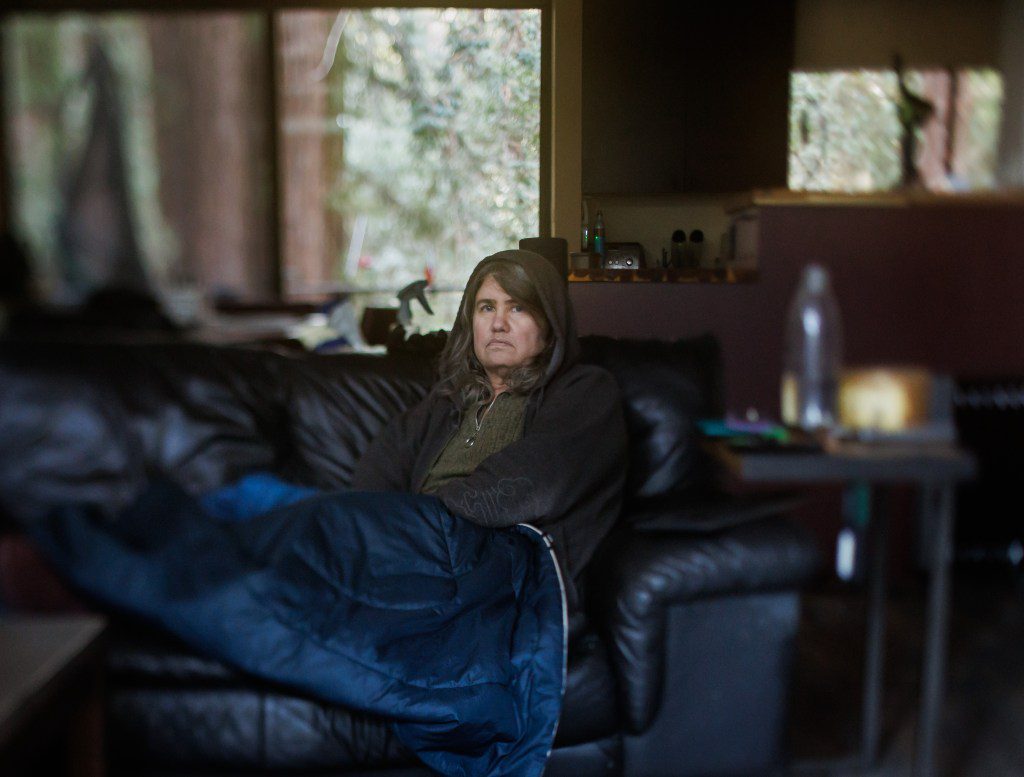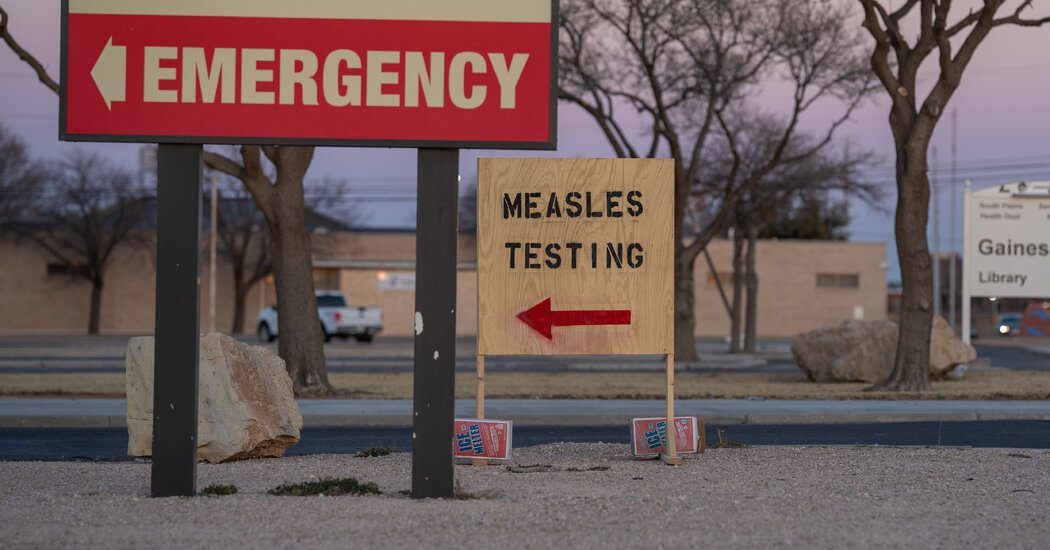
Jennifer Hooper, now 56, has faced significant challenges for the past four years, being unable to work or drive. On particularly difficult days, she struggles to prepare even a simple meal.
Her professional journey as a senior marketing director at a software startup came to an abrupt stop in July 2020 when she contracted COVID-19. What began as a mild fever and cough quickly escalated into overwhelming fatigue, cognitive impairment, blurred vision, dizziness, and persistent chest pain—symptoms that have remained relentless.
Hooper has been largely confined to her home in Portola Valley, battling to find medical professionals who acknowledge her ongoing symptoms seriously.
“I had one physician look at me with skepticism, implying that it wasn’t a serious issue,” she recalled, her voice raspy with emotion.
Hooper’s struggles are not unique; approximately 17 million adults in the U.S. experience long COVID, as defined by the CDC as symptoms lingering for at least three months. However, this condition remains poorly understood, with no FDA-approved treatments available.
This absence of effective solutions has left many patients desperately seeking physicians willing to explore innovative treatment options. Unfortunately, such practitioners are rare. A 2023 survey by the de Beaumont Foundation found that only seven percent of doctors feel “very confident” in diagnosing long COVID, with just four percent confident in managing the condition.
Research into long COVID is still in its infancy. A major challenge is the understanding that it may not be a singular ailment but rather a complex array of symptoms resulting from the coronavirus infection. Potential factors include remnants of the virus in body tissues, prolonged immune response issues, microscopic blood clotting, and changes to gut microbiomes. Additionally, long COVID is potentially linked to ME/CFS, a chronic fatigue syndrome triggered by infections from various viruses.
In mid-October of the previous year, Hooper had an appointment scheduled at the Stanford Post-Acute COVID-19 Syndrome Clinic (PACS), one of the few facilities in the Bay Area equipped with specialists knowledgeable about the needs of long COVID patients. However, due to overwhelming demand, her appointment was deferred until September.
“When you have to wait a year for a doctor’s visit, it clearly indicates a substantial gap between patient needs and available healthcare resources,” remarked Hooper, trailing momentarily in thought due to her brain fog. She added, “It’s critical that we find compassionate healthcare providers willing to listen and not dismiss the condition as psychological.”
Dr. Hector Bonilla, co-director of the Stanford PACS clinic, sees between 15 and 20 long COVID patients weekly. While the clinic is actively hiring more staff to shorten wait times, Bonilla highlighted challenges in attracting healthcare workers focused on long COVID treatment.

“Some providers either lack knowledge of long COVID or mistakenly perceive patients as hypochondriacs with unfounded health anxieties,” Bonilla explained.
Charlie McCone, 35, a former marketing and communications professional at a nonprofit in San Francisco, once enjoyed a vibrant lifestyle, cycling an average of 10 miles daily. However, after contracting COVID during the pandemic’s initial surge in March 2020, his life changed dramatically. Now, merely listening to music for half an hour or reading for ten minutes leaves him needing rest.
The most challenging symptom he experiences is profound shortness of breath.
“It felt like a vice was crushing my chest, making it utterly impossible to take a full breath, even while lying down,” he described.
In his quest to understand his condition, he learned that tiny clots could be obstructing his lungs and found anecdotal evidence suggesting blood thinners might be beneficial.
However, convincing a doctor to try this approach proved challenging; over 30 providers declined to assist him. Eventually, after much persistence, McCone was put on Plavix, a medication designed to prevent blood clotting. While he remains housebound, he is not bedridden.
Due to these profound obstacles in accessing adequate medical care, some long COVID sufferers feel disillusioned with traditional healthcare.
Paige Morrisey, 27, was an employee at Trader Joe’s in San Francisco when she tested positive for COVID in December 2020. She transitioned from an active individual who enjoyed dancing and running to someone who finds herself fatigued even after walking just one block.

While experiencing these physical symptoms, she also faced severe neurological challenges, such as anxiety, depression, memory issues, panic attacks, and confusion. Morrisey was prescribed strong antipsychotic medications, feeling as though one neurologist treated her as a research participant rather than a patient. “The only time he replied to my messages was to solicit consent for his research,” she stated.
After enduring this for six months, Morrisey joined an online support group led by someone who claimed recovery from chronic illness through diet, lifestyle changes, and mindfulness practices.
The stories of McCone and Morrisey underscore a recurring conflict between distressed patients and healthcare providers, who often grapple with the implications of administering untested medications.
“We cannot put patients’ health at risk; our hands are tied until a medication undergoes rigorous clinical evaluation,” Dr. Bonilla emphasized.
He also mentioned the difficulty in motivating patients with chronic conditions to enroll in clinical trials. “Data cannot be manufactured; genuine participation is essential,” he noted, “yet many patients hesitate to take part.”
Experts in long COVID treatment and patient advocates concur that there is an urgent necessity for more specialized clinics with comprehensive knowledge to support afflicted individuals. Stanford’s PACS clinic is one of only three in the Bay Area dedicated to this issue.
Even more critical is enhancing education for primary care providers so they can effectively address the needs of long COVID patients.

“Medical organizations must seek help in educating their medical staff on chronic illnesses such as long COVID and ME/CFS,” urged Jaime Seltzer, a Stanford Medicine researcher and scientific director at #MEAction, a nonprofit advocating for chronic illnesses.
“There simply aren’t enough specialists or clinics available to address these concerns,” Seltzer pointed out, “and even if there were, primary care providers must be equipped to accurately identify chronic ailments before referring patients to specialists.”
Given the overwhelming number of individuals seeking assistance, Dr. Bonilla believes it’s vital for healthcare providers to invest time in learning about long COVID. “If physicians dedicated just a couple of hours weekly to understanding this condition, it would be a tremendous step toward addressing the current knowledge gap,” he concluded.

Originally Published:

















